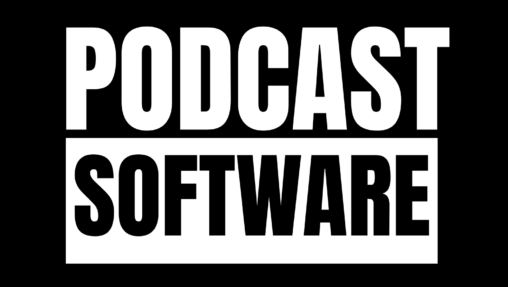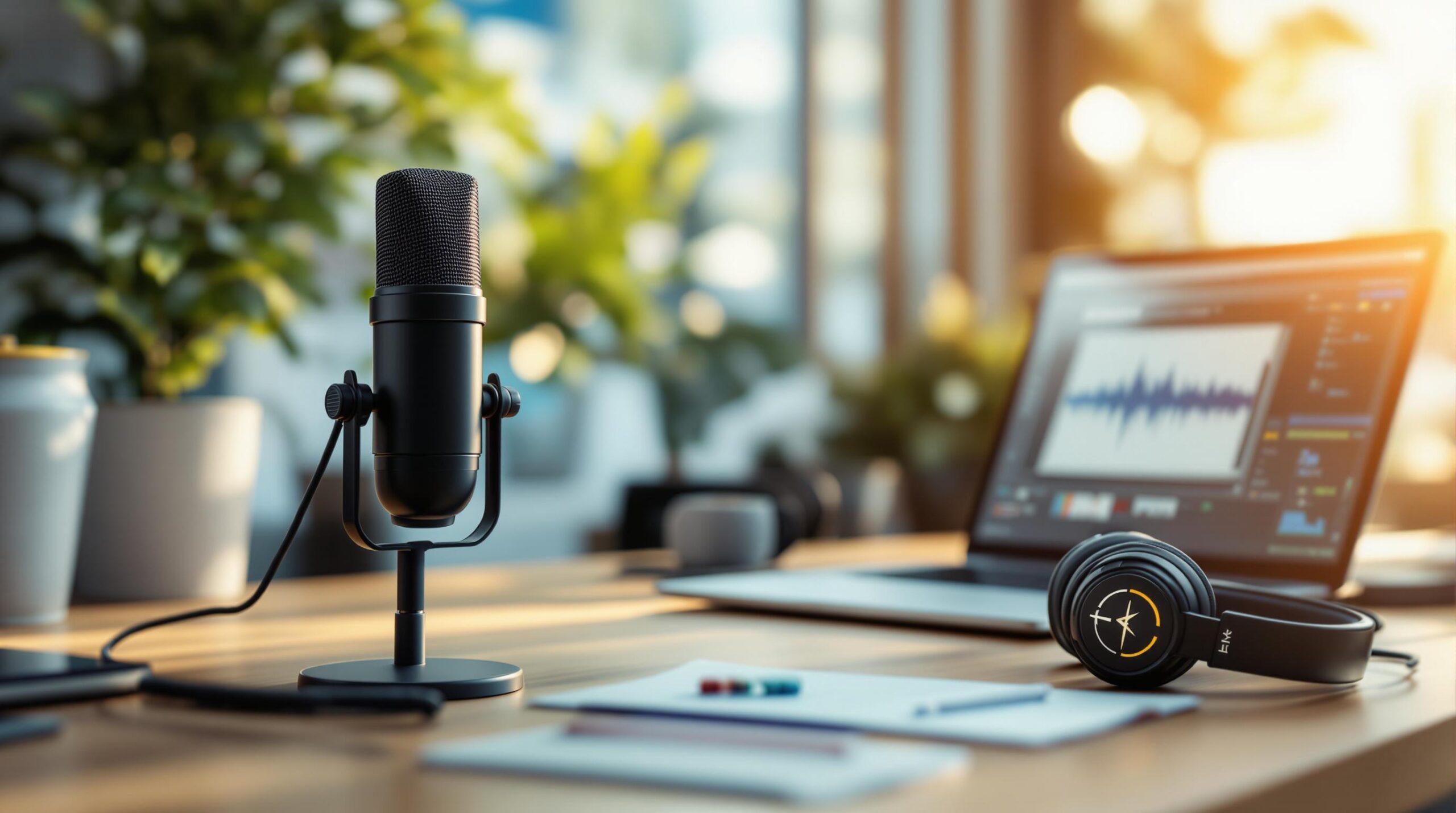Creating a podcast involves more than just recording your voice. Here’s a quick overview of the five key steps to publish a podcast successfully:
- Planning: Choose topics, schedule guests, and outline your episode. This sets the direction for your show.
- Recording: Use quality equipment and a quiet space to record clear audio.
- Editing: Clean up the audio, remove mistakes, and arrange segments for a professional finish.
- Release: Export your final file, upload it to a hosting platform, and ensure it’s distributed to podcast directories like Spotify and Apple Podcasts.
- Promotion: Write show notes, create social media posts, and share clips to attract listeners.
Tools to Simplify the Process
- Organization: Trello, Asana, or Calendly for planning and scheduling.
- Recording: Platforms like Riverside.fm for high-quality audio.
- Editing: Software like Audacity or Adobe Audition.
- Hosting: Buzzsprout or Anchor for easy distribution.
By following these steps and using the right tools, you can streamline your workflow and focus on creating great content.
Related video from YouTube
Step 1: Planning Your Podcast Episode
"A podcast workflow is the order in which you put together a podcast episode from start to finish. It’s something new podcasters seem to overlook, whereas many seasoned podcasters go into their podcasting workflow without even realizing they do it, but would be lost without it." – Emily Prokop, Podcast Producer
Want to create killer podcast episodes? It all starts with smart planning. Good prep work makes recording smoother, editing faster, and promotion easier.
Choosing Topics and Knowing Your Audience
Your podcast takes off when you nail what your listeners want. Use a project management tool to map out episodes that hit your audience’s sweet spot.
Here’s how to pick winning topics:
| Question | Purpose | Impact |
|---|---|---|
| Does it help solve listener problems? | Creates useful content | Keeps people coming back |
| Will it stay fresh or expire? | Affects replay value | Builds long-term library |
| Can you add something new? | Sets you apart | Makes content stick |
| What’s the best format? | Guides preparation | Makes recording smooth |
Let’s make this real: Say you run a fitness podcast. An episode like "Top 10 Tips for Staying Active During Winter" works because it tackles a real problem, stays useful year after year, lets you share expert tips, and fits any format – solo show, interview, or co-hosted chat.
Organizing Schedules and Guests
Cut the email ping-pong with tools like Calendly for booking guests. Send them a prep pack with everything they need: episode outline, tech specs, format details, and backup contacts.
Managing Content and Deadlines
Think ahead – plan episodes 4-6 weeks out. This gives you breathing room for research, guest booking, and tech setup. Use a project management tool to keep track of:
- Your research and key links
- Who’s confirmed to guest
- When you’re recording
- Edit deadlines
- When episodes drop
Pro tip: Watch those post-production deadlines like a hawk. Miss one, and your whole schedule can go off the rails.
Before you hit record, dig deep into your guest’s world. Check out their social posts, read their blog, listen to other interviews they’ve done. This helps you ask fresh questions that get interesting answers.
Once you’ve got your plan locked in and deadlines set, you’re all set to start recording.
Step 2: Recording Your Podcast
Let’s talk about getting great audio. The better your recording, the less time you’ll spend editing – and your listeners will thank you.
Checklist for Recording Sessions
Think of this as your pre-flight checklist. Just like pilots don’t take off without one, pro podcasters don’t hit record before running through these basics:
| Equipment Check | Environment Check | Software Check |
|---|---|---|
| Mic levels | Room sound check | Recording settings |
| Headphones working | Doors and windows closed | Backup recording on |
| All cables secure | Phones on silent | Enough storage space |
| Battery status | Heat/AC turned off | Input/output levels set |
"The key to consistent podcast quality isn’t just good equipment – it’s having a reliable pre-recording routine that catches issues before they become problems", notes the team at Riverside.fm, a leading podcast recording platform.
Tips for High-Quality Audio
Getting clean audio isn’t rocket science – it’s about the basics. Here’s what you need to know:
Your mic placement makes a huge difference. Point it at a 45-degree angle from your mouth and keep about 6-8 inches away. This setup helps avoid those pesky "p" and "b" sounds that can pop in your audio.
For remote recordings, modern platforms like Riverside.fm have changed the game. They record each person’s audio right on their computer – so even if your internet acts up, your audio stays crystal clear.
Quick tips for better sound:
- Keep 6-8 inches from your mic
- Use headphones to hear what you actually sound like
- Find a quiet room with minimal echo
- Always do a quick sound check
Basic Audio Editing Overview
After you’ve recorded, it’s time to polish your audio. Here’s what to focus on:
Clean up the sound: Start by getting rid of any background noise. Think of it like cleaning your house – you want a tidy foundation before decorating.
Balance the volume: Make sure listeners don’t have to reach for the volume control. Pay extra attention when different people are talking or when switching between segments.
Trim the fat: Cut out dead air and rambling sections, but don’t go overboard. Natural pauses in conversation help your podcast flow better – you want it to sound like a real chat, not a robot reading a script.
sbb-itb-9f49a8d
Step 3: Editing and Publishing Your Podcast
Preparing and Exporting Audio Files
Let’s talk about getting your podcast ready for the world. After cleaning up your audio, you’ll need to add metadata – the information that helps listeners find and identify your show.
Here’s what you need to know about metadata:
| Metadata Element | Example | Purpose |
|---|---|---|
| Episode Title | "EP045: Interview with Emily Prokop – Podcast Production Secrets" | Clear identification and SEO |
| Show Title | "The Podcast Workflow Show" | Consistent branding |
| File Name | podcast-workflow-ep045-emily-prokop.mp3 | Organized archiving |
| ID3 Tags | Artist, album, year, genre | Directory recognition |
When it comes to file formats, MP3 is your best bet. For talk shows, go with 128 kbps. If your show features lots of music, bump it up to 192 kbps – this gives you the sweet spot between sound quality and file size.
Uploading and Sharing Episodes
Picking the right hosting platform makes a huge difference. Buzzsprout helps you get your show everywhere with automatic distribution, while Anchor keeps things simple with free hosting and basic stats.
Here’s what your upload process should look like:
- Get your MP3 file onto your hosting platform
- Pick when you want the episode to go live
- Make sure it’s going to all the right podcast directories
- Double-check that everything looks good across platforms
Writing Show Notes and Promoting Episodes
Show notes aren’t just a nice-to-have – they’re your secret weapon for attracting listeners and search engines alike.
Make your show notes work harder by including:
- A snappy 2-3 sentence summary that hooks readers
- Time stamps that help listeners jump to the good stuff
- Links to everything you mentioned
- Info about your guests and where to find them online
- Something specific you want listeners to do next
Want to grab attention on social media? Turn short clips from your episode into audiograms – those eye-catching videos with captions that make people stop scrolling and start listening.
Improving Your Podcast Workflow
Automation Tools to Save Time
Let’s talk about making podcast production easier through automation. You’ll spend less time on boring tasks and more time creating great content.
Take Calendly – it ends those endless back-and-forth emails about scheduling. Your guests just pick a time that works, and boom – you’re set. Zapier handles the tedious stuff like posting your episodes on social media or sending emails to confirm guest appearances.
Here’s what these tools can do for you:
| Task | Tool | What It Does |
|---|---|---|
| Guest Booking | Calendly | Ends email ping-pong |
| Social Posts | Zapier | Posts episodes automatically |
| File Storage | Dropbox + Zapier | Sorts recordings for you |
| Show Notes | Google Docs + Zapier | Sets up ready-to-use templates |
But remember: automation handles the routine stuff – you still need to manage the big picture.
Tracking Tasks with Management Tools
Running a podcast is like juggling – you’ve got lots of balls in the air at once. That’s where Trello and Asana come in. These tools help you keep track of everything from your initial idea to hitting "publish" and beyond.
Want to stay organized? Set up spaces for:
- Planning your episodes and research
- Managing recording dates
- Keeping tabs on editing
- Handling publication tasks
- Getting the word out
Reviewing and Updating Your Process
Start by mapping out how you do things – you can’t improve what you can’t see. Check your process monthly: What’s slowing you down? Which tools work best? What does your team think? Need editing tips? Check out Podcastsoftware.co.
"A podcast workflow is like your recipe. You may change your ingredients from time to time or the order in which you combine ingredients, but the base ingredients stay the same."
Here’s the thing: A daily news show needs a different setup than a weekly interview show. Build a process that fits your show, but keep your core steps consistent. Think of it as your podcast’s DNA – the basic structure stays the same, but you can adapt the details as needed.
Conclusion
A solid podcast workflow makes all the difference between a smooth production and chaos. Each step connects naturally to the next, from initial planning through final promotion. Your workflow needs to match your show’s specific requirements while keeping quality high.
"Having a podcast production process helps you plan every aspect of your podcast show, from sourcing content to inviting guests to distribution. It sets your podcast off on the right foot to reach and engage audiences." – Riverside.fm Blog
Ready to level up your podcast? Here’s what you need to focus on at each stage:
| Stage | Key Focus Areas | Tools & Resources |
|---|---|---|
| Planning | Topic Research & Scheduling | Project Management Tools |
| Recording | Audio Quality & Guest Coordination | Recording Software |
| Post-Production | Editing & Show Notes | Audio Editing Platforms |
| Distribution | Publishing & Promotion | Visit Podcastsoftware.co |
Keep checking how your process works and fix what’s not working. Listen to your audience’s feedback – they’ll tell you what needs to change. Need help picking the right tools? Head over to Podcastsoftware.co for detailed reviews and recommendations on everything from hosting to editing software.
Start small. Test what works. Build your system step by step. Before you know it, you’ll have a podcast production machine that runs like clockwork.

